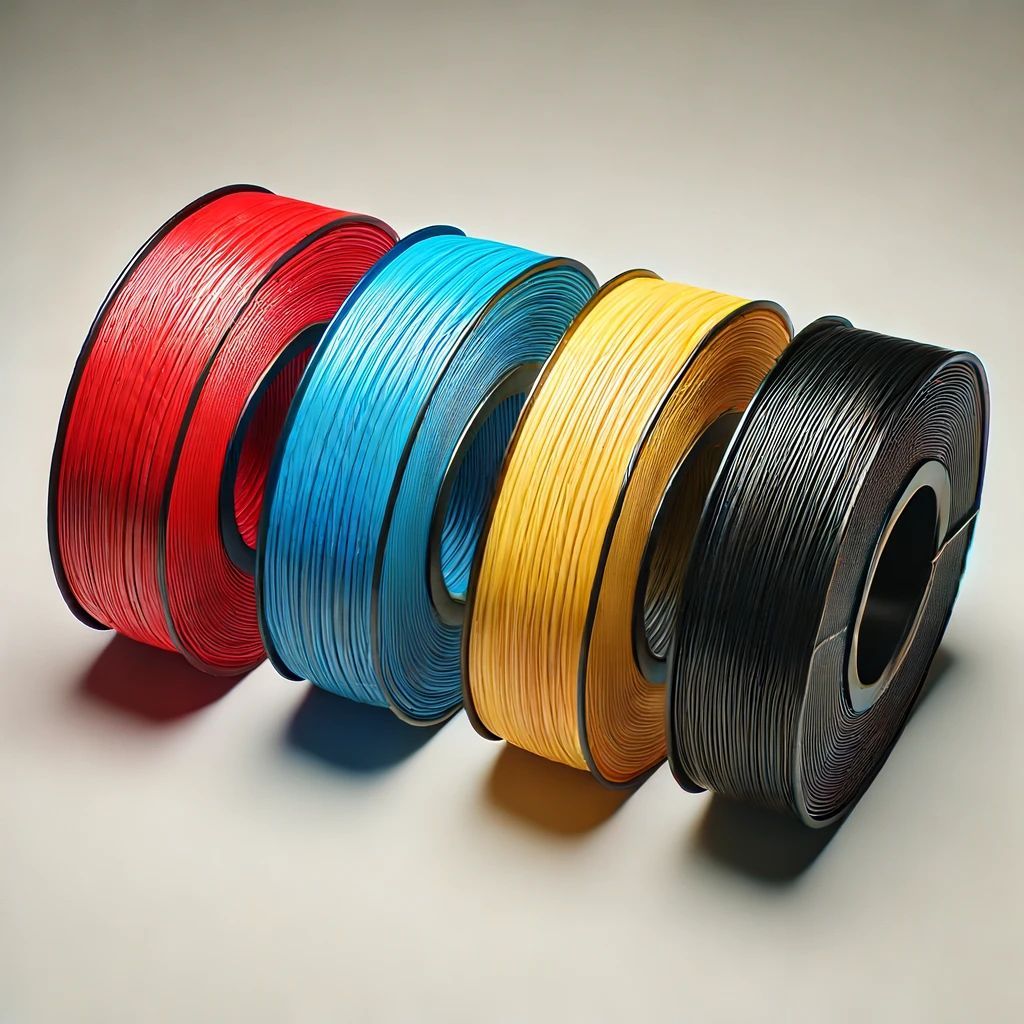3D Printed PET
PET – Industrial-Grade 3D Printing for Lightweight, Moisture-Resistant Parts
Overview
PET is the base material used to make PETG, but it’s not the same thing. If you want something that's a bit stiffer, less prone to oozing during print, and offers excellent moisture resistance, PET might be what you're after. It’s got decent strength, prints well under the right conditions, and it doesn’t soak up water like Nylon does.
I don’t reach for PET every day, but for jobs where you want a clean finish, low warping, and good strength for internal-use components, it can be spot-on. Especially if someone wants a balance between affordability and functionality — this material lands right in the middle.
Key Technical Specifications (Typical Values)
• Tensile strength: 50–60 MPa
• Elongation at break: 15–25%
• Heat deflection temperature: 70–80°C
• Density: ~1.38 g/cm³
• Chemical resistance: Good (oils, grease, mild acids)
• UV resistance: Moderate
• Impact strength: Moderate
• Surface finish: Smooth, with slight gloss
Where PET stands out is in its low moisture absorption — meaning you don’t need to dry it constantly like Nylon. That makes it ideal for low-maintenance workshop setups or parts going into humid environments.
Why Engineers Use PET
PET sits in a space where a lot of materials either overdo it or fall short. It’s not as soft or brittle as PLA, not as prone to warping as ABS, and a bit stiffer than PETG. That’s why some engineers prefer it when:
• Dimensional accuracy is key
• You want a clean part that’s easy to post-process
• You need less downtime maintaining filament
• Your part is going indoors or in mildly humid environments
Plus, it behaves predictably — no big surprises during printing, which saves you time and wasted material.
Common Real-World Uses
I’ve used PET for:
• Internal housings and brackets
• Simple industrial covers and caps
• Mounting plates for electronics
• Enclosures for humid environments
• Lightweight parts that don’t see heavy mechanical load
If you're printing a prototype that’s going inside a cabinet or control box — where conditions are stable but space is tight — PET’s dimensional stability makes it a reliable choice.
Printing Considerations
To get good results with PET, here’s what we do:
• Print temp: usually around 230–250°C
• Bed temp: 70–85°C — and use a textured bed or glue
• Cooling: medium to high, depending on surface finish requirements
• Retraction settings: dialled in to avoid stringing or oozing
• Infill: adjustable, but we often use 40–100% depending on the use case
You’ll get better results if you know what the part is doing. Like I always say — if it’s just for show, we can save you money. If it’s doing a job, we build it up solid.
Why Buyers Choose PET
From a buyer’s perspective, PET makes sense when:
• You want a step up from PLA but don’t need ABS or Nylon
• You’re trying to balance strength and price
• You’re dealing with moisture or ambient humidity
• You want something printed clean, with a nice finish, and quick turnaround
It’s cost-effective, available in different colours, and won’t give you grief with post-processing. Great for prototypes or light-duty parts where appearance still matters.
Why We Use PET at Mitchell & Son
I’ve had customers come in with basic brackets that kept swelling or cracking in damp locations — garage setups, utility boxes, garden sheds. Nylon would’ve worked, but the cost wasn’t justified. I told them straight: “Let’s try PET. It’ll hold up, stay stable, and won’t cost you a fortune.” They got the part, installed it, and haven’t been back since — which in our world, is the best review you can get.
We don’t upsell. We spec the right material for the job. PET works when you need low hassle, good looks, and just enough strength to get it done.
SOME INFOMATION ABOUT THE MATERIAL
PET, or polyethylene terephthalate, is a type of plastic that is used in a variety of different ways. PET is most commonly used to create plastic bottles and other food packaging. This is because PET can be 100% recycled.
PET is a versatile material that is both lightweight and durable. This makes it an ideal choice for many different applications. PET is also heat resistant and can be easily molded into different shapes.
One of the most unique properties of PET is that it is semi-transparent. This means that it can be used to create products that have a clear, see-through appearance.
Despite its many benefits, there are some drawbacks to using PET. One of the biggest concerns is that PET is not biodegradable. This means that it can take hundreds of years for PET to break down in the environment.
Another issue with PET is that it can release harmful chemicals when it is heated. This is why it is important to be careful when using PET products and to always follow the instructions on the packaging.
Overall, PET is a versatile and useful material that has many different applications. However, it is important to be aware of the potential dangers of using PET before deciding to use it for your next project.













